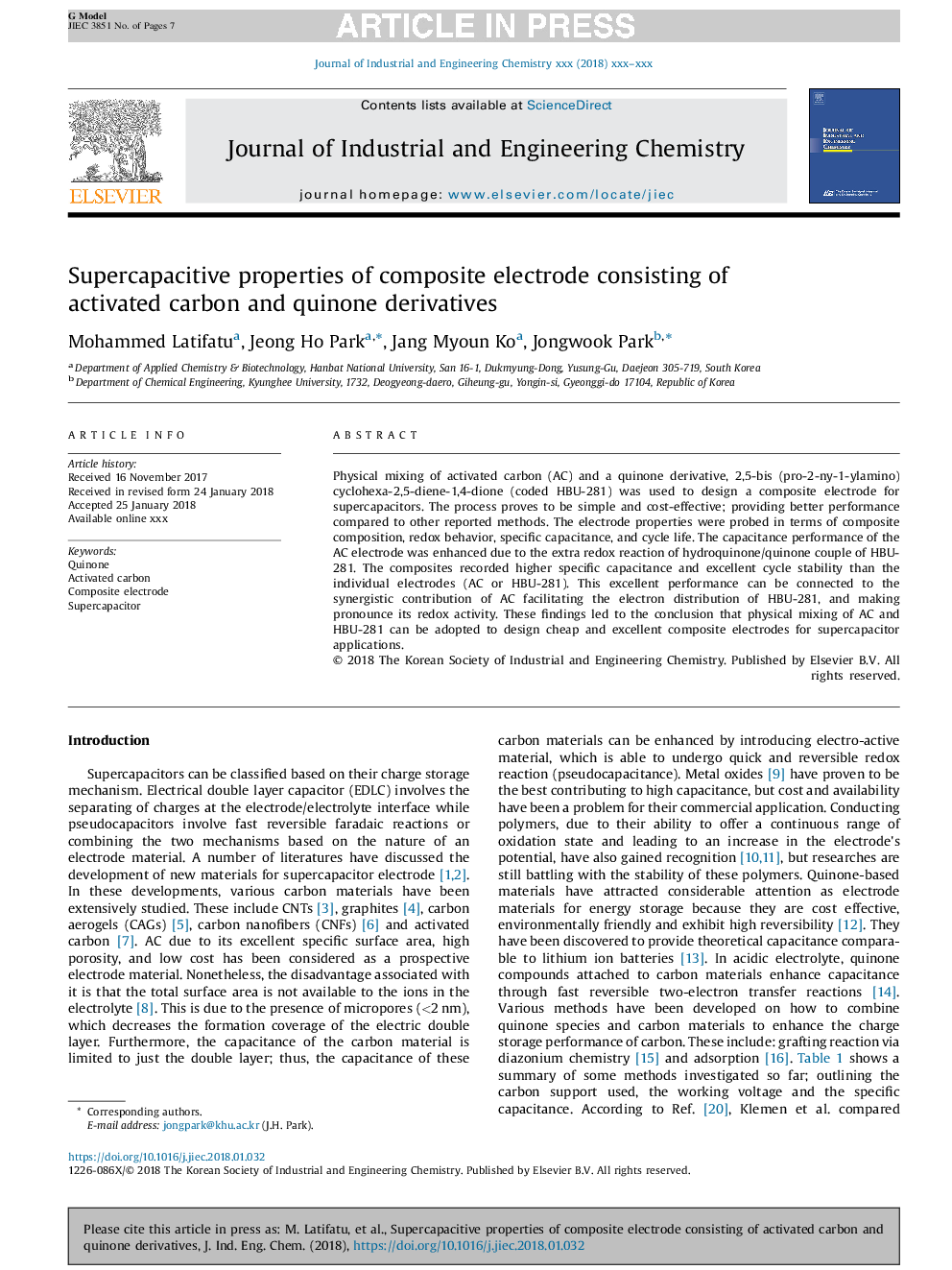| Article ID | Journal | Published Year | Pages | File Type |
|---|---|---|---|---|
| 6666330 | Journal of Industrial and Engineering Chemistry | 2018 | 7 Pages |
Abstract
Physical mixing of activated carbon (AC) and a quinone derivative, 2,5-bis (pro-2-ny-1-ylamino) cyclohexa-2,5-diene-1,4-dione (coded HBU-281) was used to design a composite electrode for supercapacitors. The process proves to be simple and cost-effective; providing better performance compared to other reported methods. The electrode properties were probed in terms of composite composition, redox behavior, specific capacitance, and cycle life. The capacitance performance of the AC electrode was enhanced due to the extra redox reaction of hydroquinone/quinone couple of HBU-281. The composites recorded higher specific capacitance and excellent cycle stability than the individual electrodes (AC or HBU-281). This excellent performance can be connected to the synergistic contribution of AC facilitating the electron distribution of HBU-281, and making pronounce its redox activity. These findings led to the conclusion that physical mixing of AC and HBU-281 can be adopted to design cheap and excellent composite electrodes for supercapacitor applications.
Related Topics
Physical Sciences and Engineering
Chemical Engineering
Chemical Engineering (General)
Authors
Mohammed Latifatu, Jeong Ho Park, Jang Myoun Ko, Jongwook Park,
